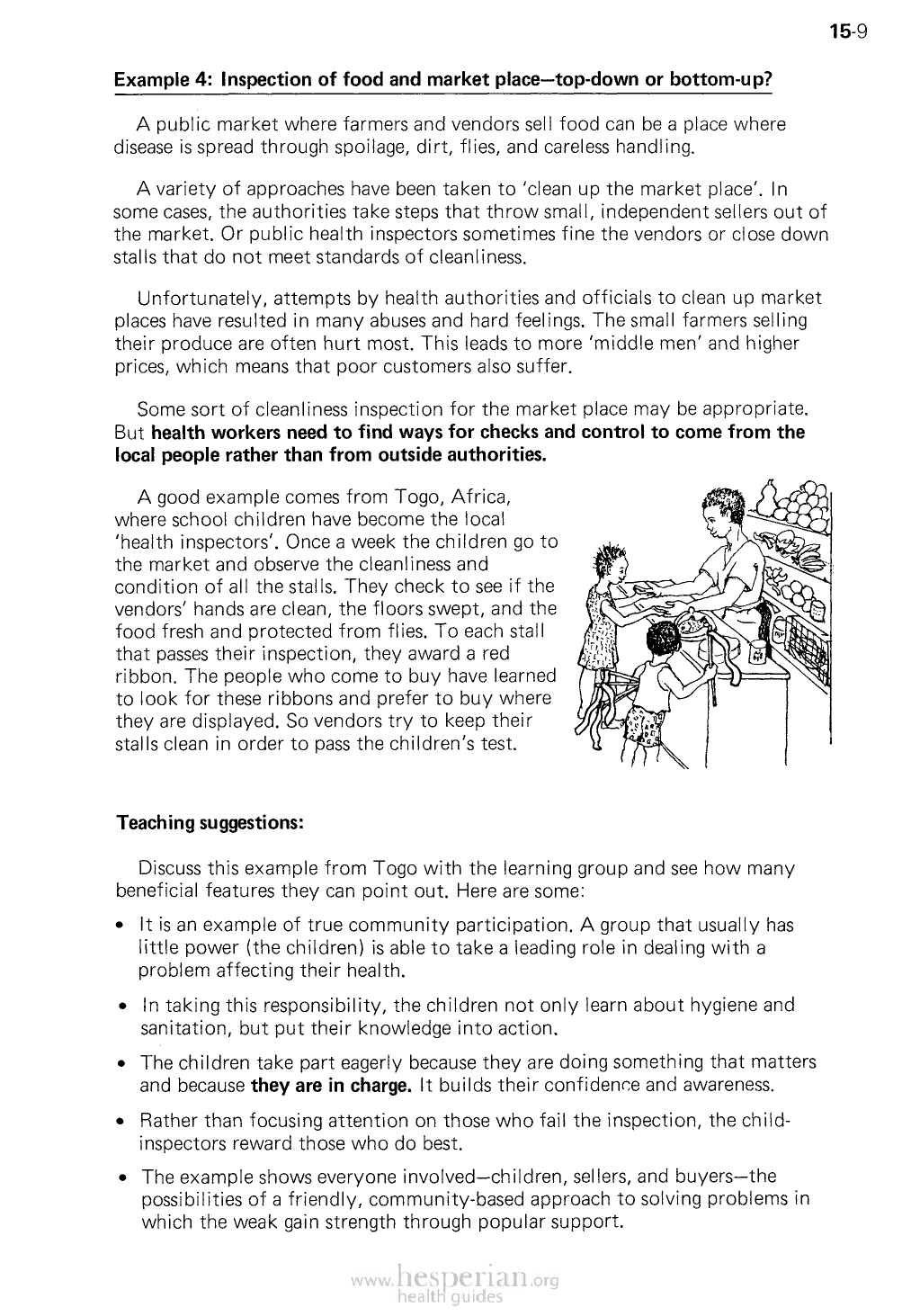
15-9
Example 4: Inspection of food and market place-top-down or bottom-up?
A public market where farmers and vendors sell food can be a place where
disease is spread through spoilage, dirt, flies, and careless handling.
A variety of approaches have been taken to ‘clean up the market place’. In some
cases, the authorities take steps that throw small, independent sellers out of the
market. Or public health inspectors sometimes fine the vendors or close down
stalls that do not meet standards of cleanliness.
Unfortunately, attempts by health authorities and officials to clean up market
places have resulted in many abuses and hard feelings. The small farmers selling
their produce are often hurt most. This leads to more ‘middle men’ and higher
prices, which means that poor customers also suffer.
Some sort of cleanliness inspection for the market place may be appropriate. But
health workers need to find ways for checks and control to come from the
local people rather than from outside authorities.
A good example comes from Togo, Africa,
where school children have become the local
‘health inspectors’. Once a week the children go
to the market and observe the cleanliness and
condition of all the stalls. They check to see if the
vendors’ hands are clean, the floors swept, and
the food fresh and protected from flies. To each
stall that passes their inspection, they award a red
ribbon. The people who come to buy have learned
to look for these ribbons and prefer to buy where
they are displayed. So vendors try to keep their
stalls clean in order to pass the children’s test.
Teaching suggestions:
Discuss this example from Togo with the learning group and see how many
beneficial features they can point out. Here are some:
• It is an example of true community participation. A group that usually has little
power (the children) is able to take a leading role in dealing with a problem
affecting their health.
• In taking this responsibility, the children not only team about hygiene and
sanitation, but put their knowledge into action.
• The children take part eagerly because they are doing something that matters
and because they are in charge. It builds their confidence and awareness.
• Rather than focusing attention on those who fail the inspection, the child-
inspectors reward those who do best.
• The example shows everyone involved—children, sellers, and buyers—the
possibilities of a friendly, community-based approach to solving problems in
which the weak gain strength through popular support.